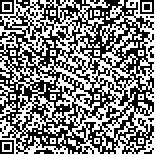| 摘要: |
| [摘要] 目的 分析住院患者脓液及伤口分泌物标本病原菌的分布及主要病原菌的耐药情况,为临床提供可靠的控制感染依据。方法 对该院在2010-01~2012-12住院患者送检的1 111份脓液及3 348份伤口分泌物标本进行细菌培养,分离出的病原菌进行鉴定及药敏分析。结果 分离出病原菌1 442份,细菌的分布情况为:革兰氏阳性球菌占33.9%(489/1442),革兰氏阴性杆菌占58.3%(840/1442),真菌占6.2%(90/1442),检出的前几名病原菌分别为金黄色葡萄球菌占22.3%(322/1442),大肠埃希菌占18.0%(259/1442),铜绿假单胞菌占12.8%(185/1442),变形杆菌占6.0%(87/1442),不动杆菌属占6.6%(95/1442),凝固酶阴性葡萄球菌占4.9%(70/1442)。结论 该院住院患者的伤口化脓性感染主要以阴性杆菌为主,但金黄色葡萄球菌仍是感染的首要病原菌,其次是大肠埃希氏菌、铜绿假单胞菌,同时还分离出诺卡、艾肯和放线杆菌等罕见细菌。提示引起伤口化脓感染的病原菌呈现多样化,治疗应及时确定病原菌,并根据药敏结果合理用药。 |
| 关键词: 脓液 分泌物 病原菌 细菌培养 耐甲氧西林的金黄色葡萄球菌 |
| DOI:10.3969/j.issn.1674-3806.2013.08.16 |
| 分类号:R 44 |
| 基金项目: |
|
| Analysis of pathogenic bacteria of pus and wound secretion of inpatient |
|
ZHAO Li,CHEN Xing-chun
|
|
Department of Clinical Laboratory,the People′s Hospital of Guangxi Zhuang Autonomous Region, Nanning 530021, China
|
| Abstract: |
| [Abstract] Objective To analyze the distribution of pathogenic bacteria and the drug resistance of main pathogen in pus and wound secretion specimens, and to provide the basis of reliable control infection for clinic.Methods Specimens of 1 111 pus and 3 348 wound secretion were used for bacterial culture in Guangxi people′s hospital from January 2010 to December 2012, and the isolated pathogen were used for identification and drug susceptibility analysis.Results One thousand four hundred and forty-two pathogenic bacteria were isolated, the distribution of bacteria was as follows: Gram positive cocci accounted for 33.9%(489/1442), Gram-negative bacteria accounted for 58.3%(840/1442), Fungi accounted for 6.2%(322/1442). The top of pathogenic bacteria checked out were as follows: Staphylococcus aureus accounted for 22.3%(322/1442), E. coli accounted for 18.0 %(259/1442), verdigris accounted for 12.8%(185/1442), proteus accounted for 6.0%(87/1442), Acinetobacter accounted for 6.6%(95/1442), coagulase negative staphylococcus accounted for 4.9%(70/1442).Conclusion The wound purulent infections of the patients in Guangxi people′s hospital are mainly caused by negative bacillus, but Staphylococcus aureus is the primary pathogen of infection, followed by E.coli bacteria, Pseudomonas aeruginosa. Rare bacteria as noka, aiken and actinobacillus are also isolated. Our results show that pathogenic bacteria of wound purulent infection festering present diversification. Pathogens should be timely identified while treatment. And drug should be rationally used according to the results of drug susceptibility. |
| Key words: Pus Secretion Pathogenic bacteria Bacterial culture Methicillin-resistant staphylococcus aureus |

